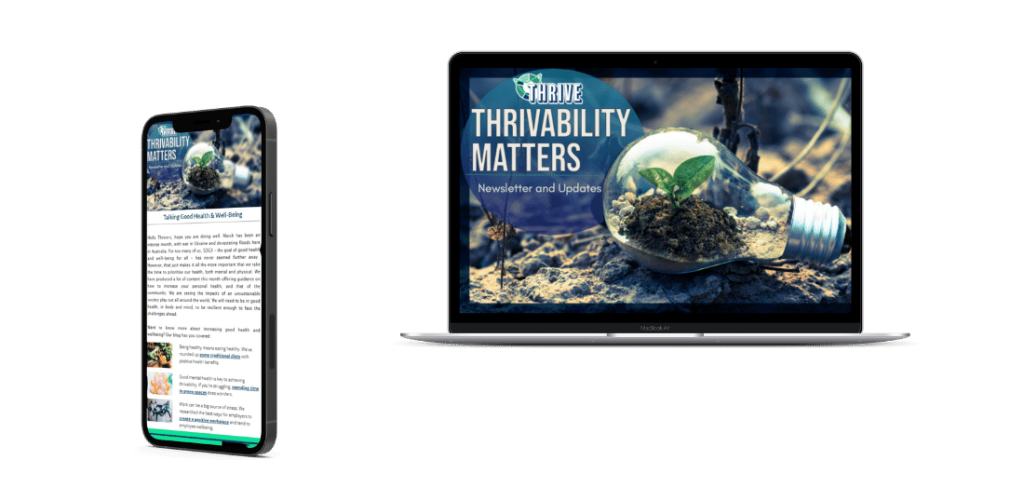Unequal development persists in much of the developing world, with over one billion people living in extreme poverty. (United Nations, 2013). The 2030 Agenda for Sustainable Development has set a goal- to leave no one behind. However, can we make this a reality?
To put this in perspective, the United Nations found that “the average income of people living in Northern America is 16 times higher than that of people in sub-Saharan Africa” (United Nations, 2020 p.21). In other words, many are left behind.
Just as we focus on global issues such as climate change and reaching net-zero emissions. we must address income inequality and unequal development. These issues are tied to each other. So, why is it so hard for the global south to overcome the vicious cycle of income inequality?
The Global North and South
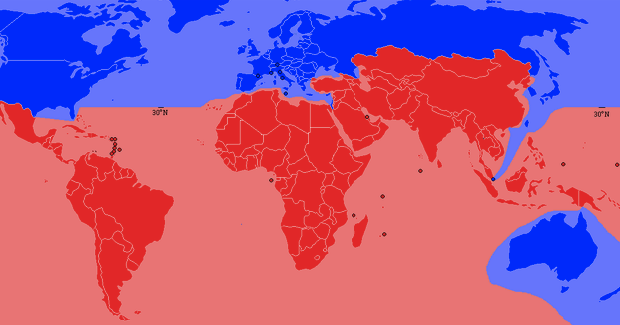
The world can be split into two areas, the Global North and Global South. These terms were created by the World Bank to describe the economic status of nations. The Global South refers to countries with low-to-middle levels of income (e.g., the red countries on the map). In contrast, the Global North refers to countries with developed economies (e.g., the countries coloured in blue).
Unequal Development
When defining development, we often link this to modernity. Rostow’s theory on growth states that development is a process that takes place in five stages (figure 2). It starts when a country leaves its traditional society behind, and becomes an industrialised one. For those in the global south, this change often fails to happen. Why is that?
Firstly, Rostow’s theory is flawed in that it perceives European development as the best way to growth. Secondly, it fails to recognise the harmful impacts of colonialism (Itagaki, 1963). Lastly, social and environmental factors differ between countries. As a result, development is subject to change between them.
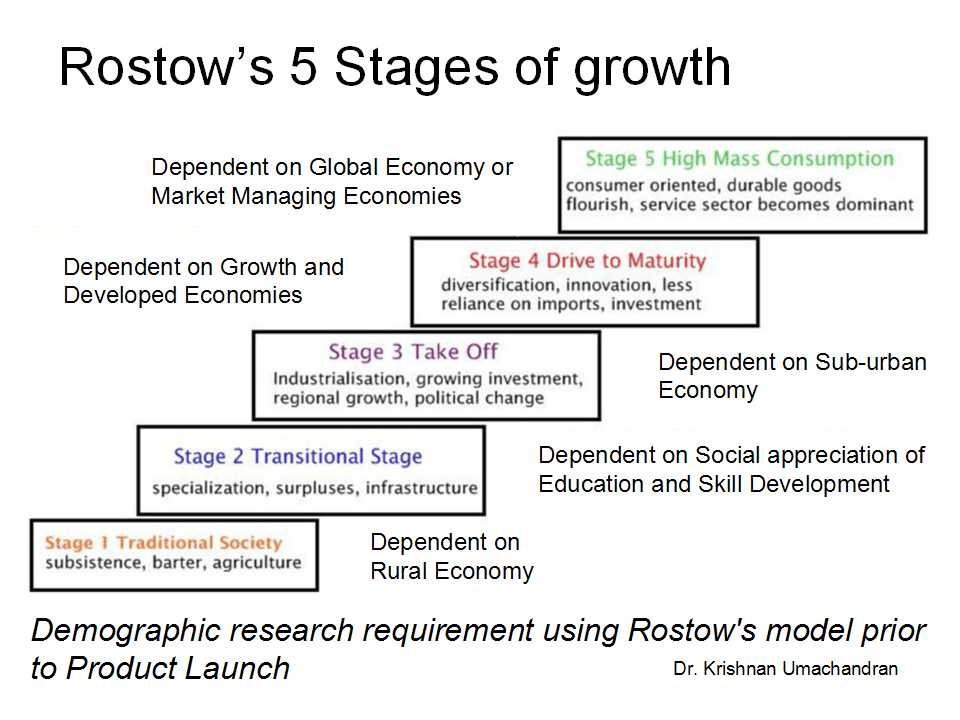
Cores and Peripheries
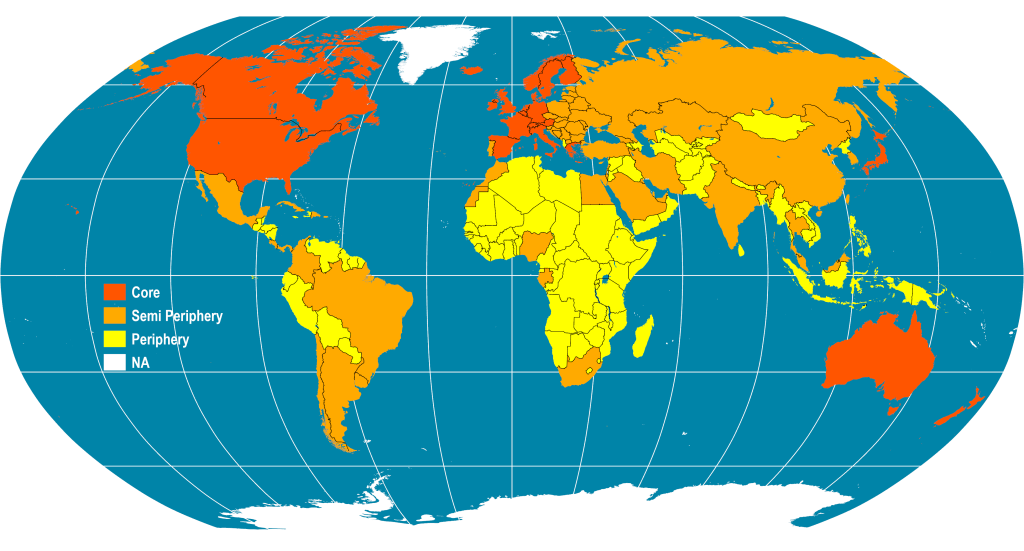
The concept of cores and peripheries has become one of the more popular explanations for why unequal development occurs. In 1966, Friedman coined the idea of a core-periphery relationship to describe the imbalance of power in economies and society (Oxford, n.d). Countries in the core often have:
- Higher wages,
- Better healthcare.
- Access to greater technology, food, water, shelter, and other needs.
- Economies that exploit periphery nations’ raw materials for their own economic and technical growth.
This inequality tends to be a result of cores controlling global capitalist markets. Cores are wealthy and powerful societies that often control and exploit the weaker peripheries (in this case, the global north tends to exert control over the south). Hence, this unequal relationship makes it difficult for the global south to develop independently.
Theories of Unequal Development
Andre Gunder Frank’s Dependency Theory and Immanuel Wallerstein’s World System Theory are two of the most well-known ideas on unequal growth. Both suggest that progress and underdevelopment are tied to each other, based on the idea of cores and peripheries (Trimberger, 1979).
Dependency Theory
Dependency Theory states that the global economy’s allocation of power and resources is unequal. This can lead to undeveloped countries (Romanuik, 2017). As a result, countries in the global south often have little choice but to depend on cores due to the vast differences within the global economic system.
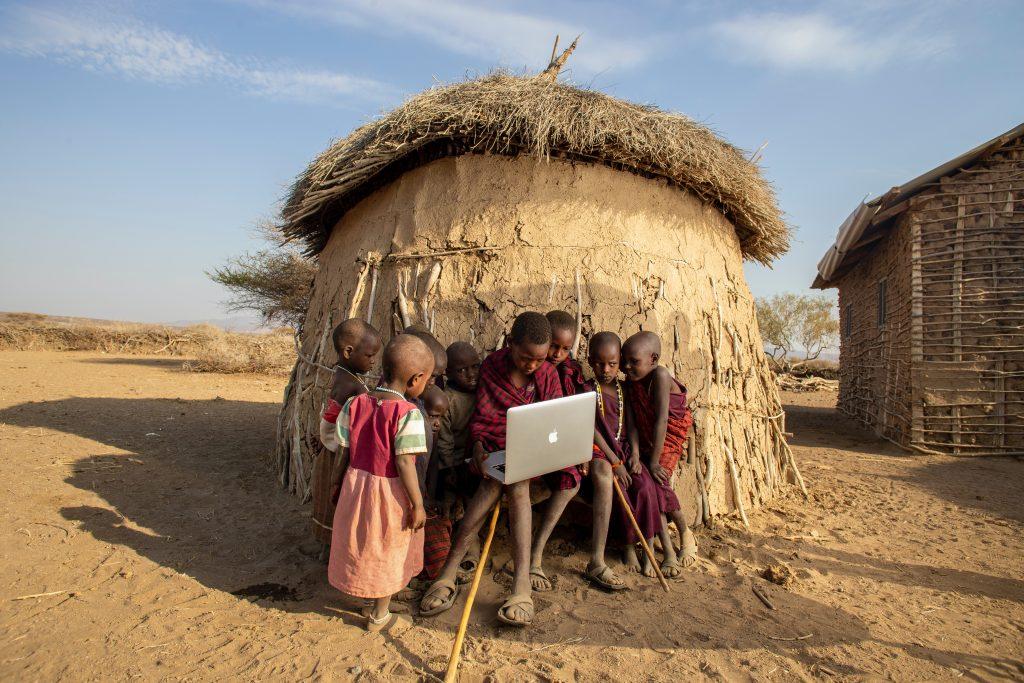
World System Theory
According to Yamada, the “modern world-system is the exchange of commodities in the international division of labour, and its operational principle—its mode of production—is capitalism,” (Yamada, 2018). As a result, labour divisions tend to fall into three categories:
- Cores. They are the most developed countries. (For example, the USA and Western Europe).
- Semi-periphery. Countries with moderate wealth, but also have poverty. (Includes countries such as India and Brazil).
- Periphery. Countries with low wealth (For instance, many countries in Africa and South East Asia).
In this approach, core countries exploit both semi-periphery and periphery countries (while semi-peripheries exploit only peripheries). These groups, however, are not permanent. Therefore, positions in the core and periphery are subject to change (Martínez Vela, 2001). For example, South Korea is one example of a periphery nation rising to a core (Fernandes, 2013).
Unequal Ecological Exchange
This is a term used in ecological economics to describe the differences in global development. It shows that many countries received more energy than they gave due to trade relations (Foster & Holleman, 2014). Thus, long-term sustainable growth in peripheral countries is complexified due to the lopsided structure of these exchanges.
The Global Economy
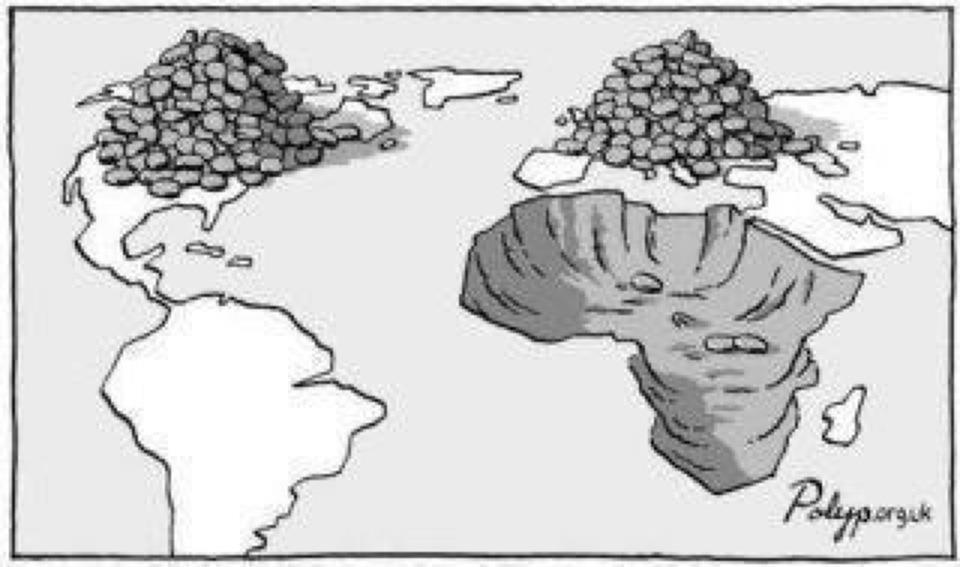
Source: Polyp
According to these theories, underdevelopment is linked to global economic systems. However, though supporters of economic development believe that it leads to prosperity, this can often cause:
- Monopolies of power.
- Exploitation of natural resources.
- Environmental degradation, as free markets tend to ignore natural impacts.
- Unequal opportunities and access to resources, often leading to social division.
What Do You Think?
Ultimately, the theories and their perspectives on underdevelopment are not flawless. However, despite their imperfections, these theories gave new views on economic development during a time where economic growth was seen as the best way forward. If economic growth causes issues, what can we do to create a thrivable future?
The first step is to change how we view economic development. The days of endless economic growth are over. This change is evident with GDP becoming less useful as a prosperity measuring tool. Policies that fix the issues keeping people in poverty are valuable in reducing inequality. A circular economy is another alternative that has recently gained popularity due to its strong ties to sustainability.
The second step would be to acknowledge the effects of colonialism and globalisation on many developing countries. Exploiting the natural resources of periphery countries has worsened this issue. As a result, developed countries have often benefitted at their expense. Understanding the historical context behind growth is vital for tackling unequal development.
The final step is to support organisations that fight towards ending poverty. Sustainable Brands has a list of non-governmental organisations that work towards addressing developmental issues in the developing world.
If you would like to learn more about The THRIVE Project and how you can make a positive impact on the world, click the link. We should all strive to make the entire world THRIVE.
